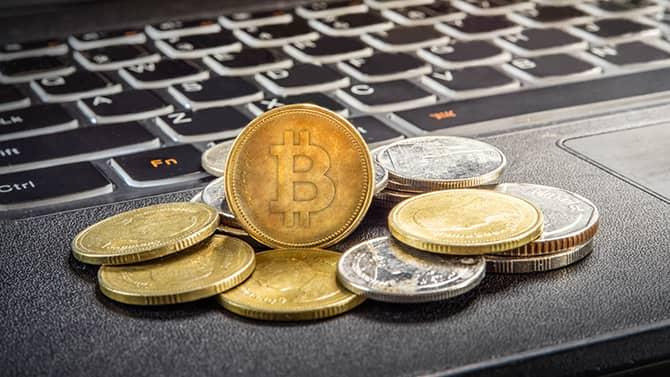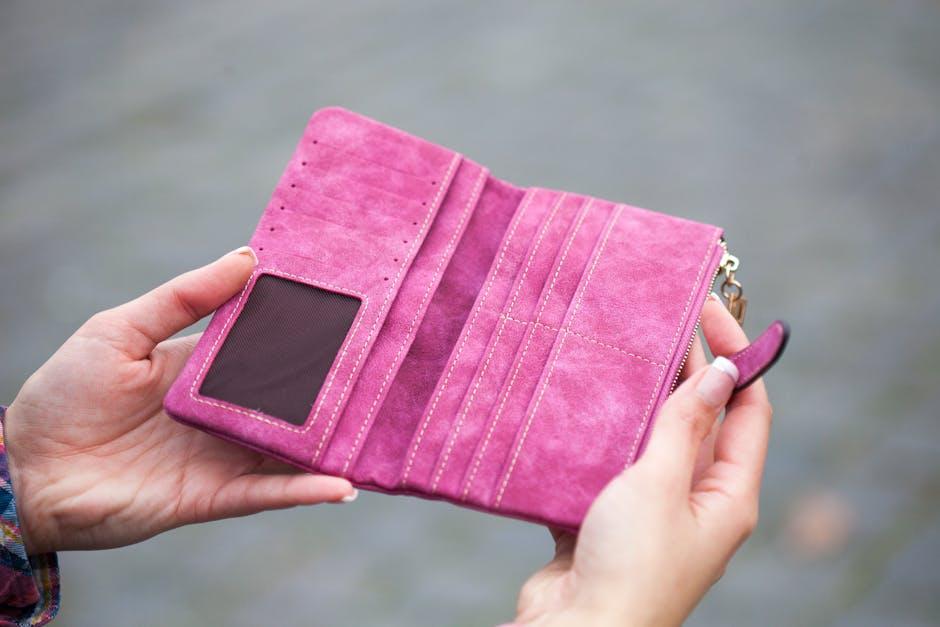Welcome, intrepid reader, to the wild digital frontier—also known as the world of cryptocurrency! If you’ve ever found yourself nodding along cluelessly in conversations filled with baffling terms like blockchain, altcoins, and HODL, you’re certainly not alone. Understanding cryptocurrency can often feel like trying to decipher an alien language or mastering the art of juggling flaming torches while riding a unicycle. It sounds impossible, but with the right guidance, it can be done!
In “,” we promise to guide you through this technobabble jungle without frying your brain circuits or breaking your piggy bank. So tuck away that mental image of Bitcoin as some kind of elusive, digital Bigfoot, and come along as we clarify the ABCs of crypto, decode the jargon, and even throw in a few fun analogies (because who doesn’t love comparing blockchain to a really, really long grocery receipt?). By the end of this article, you might just find yourself feeling like the Sherlock Holmes of the crypto world—minus the deerstalker hat, of course. Let’s dive in!
Cryptocurrency for Dummies: Yes, That Means You
Imagine trying to explain money to an alien—now that’s cryptocurrency in a nutshell! Simply put, it’s digital money that exists only online. Unlike the stuff in your wallet, you can’t touch or feel it. Instead, it’s secured using something called blockchain technology. Think of the blockchain as a giant, unchangeable ledger spread across numerous computers worldwide. It verifies transactions and keeps everything transparent and safe. Sounds like science fiction, right? Guess what? It’s real, and it’s worth understanding a bit about it.
- Bitcoin (BTC): The granddaddy of them all. Created by the mysterious Satoshi Nakamoto in 2009.
- Ethereum (ETH): Not just digital cash but a whole platform for running decentralized apps (dApps).
- Dogecoin (DOGE): Started as a joke, but now it’s serious business, thanks to tweets from celebrities.
| Term | Meaning |
|---|---|
| Wallet | A software to store your crypto. |
| Exchange | A platform to buy or sell cryptocurrencies. |
| Private Key | Your password to access your crypto—never share it! |

Cryptographic Magic: How These Digital Coins Get Their Wizardry
Ever wonder how cryptocurrencies come to life? Well, it’s not exactly done with a wave of a wand, but it’s pretty close! Cryptocurrencies rely on cryptography, the art of writing or solving codes. This digital sorcery ensures that transactions are secure and that new coins are created in a way that’s transparent yet tamper-proof. Imagine buying a unicorn with your digital wallet: cryptography makes sure that no one can copy that unicorn and say it’s theirs. No fake unicorns on our watch!
Now let’s talk about the magic behind the scenes: blockchain technology. Think of blockchain as a digital ledger that keeps track of every single transaction ever made. It does this by chaining blocks of data together, making it hard for any mischievous wizard to alter the records. Here’s a quick rundown of what makes blockchain so special:
- Decentralization: No single entity controls it. It’s like a secret society where everyone has a copy of the book of spells.
- Immutability: Once a block is added, it can’t be changed. It’s set in stone – or in this case, code.
- Transparency: Everyone can see the transactions, but personal details remain hidden. It’s like being invisible at a masquerade ball.
Here’s a cheeky little table to sum it up:
| Cryptographic Magic | Explanation |
|---|---|
| Hash Functions | Secure way to convert data into a fixed-size signature or hash. |
| Public-Key Cryptography | Encrypts data so only the intended receiver can read it. |
| Digital Signatures | Verifies the authenticity of digital messages or documents. |

Wallets, Exchanges, and Losing Your Password: Navigating the Basics
When diving into the exciting world of cryptocurrency, you’ll quickly come across terms like wallets and exchanges. Think of a wallet as your digital piggy bank. It’s where you store your precious coins and tokens. Wallets can be either hot (connected to the internet) or cold (offline). A cold wallet is like a treasure chest buried in your backyard—super secure but a bit inconvenient if you want quick access. Hot wallets, on the other hand, are more like your regular wallet but potentially more exposed to digital pickpockets.
Now, let’s talk losing your password. If you lose the password to your crypto wallet, it’s like forgetting where you buried that treasure chest. Unlike regular banks, there’s no customer service to call for a reset. So, keep your passwords safe and maybe write them down somewhere not easily accessible to nosy roommates or pets with a chewing habit. Here’s a quick comparison to help you out:
| Option | Security | Convenience |
|---|---|---|
| Hot Wallet | Moderate | High |
| Cold Wallet | High | Low |
- Tip #1: Use strong, unique passwords.
- Tip #2: Consider a password manager.
- Tip #3: Double-check all information—trust us.

Risky Business: How to Avoid Becoming the Next Bitcoin Horror Story
So you’re thinking about diving into the world of cryptocurrency? Hold on to your hats, folks—it’s a wild ride! Before you become the protagonist in a cautionary tale, keep a few critical points in mind. First off, always do your own research. Yes, the forums and Reddit threads are buzzing with the latest tips, but you’ve got to dig deeper. Look for reliable news sources, check the credentials of influencers, and track market trends. Think of it as sleuthing—yeah, like Sherlock Holmes, but cooler because you have the internet at your fingertips.
Next up, don’t put all your eggs in one basket. We’ve all heard stories of people losing their life savings because they went all-in on a single cryptocurrency. Diversification is your safety net. Spread your investments across various coins and technologies. Trust us, it’s not as complicated as it sounds. Here’s a quick guide:
- Bitcoin (BTC): The granddaddy of them all, but also highly volatile.
- Ethereum (ETH): Offers smart contracts and is known for its versatility.
- Ripple (XRP): Focuses on facilitating cross-border transactions.
| Coin | Primary Function | Risk Level |
|---|---|---|
| Bitcoin (BTC) | Store of Value | High |
| Ethereum (ETH) | Smart Contracts | Moderate |
| Ripple (XRP) | Cross-Border Payments | Moderate |
Q&A
###
Q: First things first, what the heck is cryptocurrency?
A: Great question! Imagine money has decided to go digital and have a wild holiday from paper bills and metal coins. Cryptocurrency is that adventurous form of digital or virtual currency that uses cryptography for security. In a nutshell, it’s like internet cash—but cooler and sometimes more confusing.
Q: Why is it called ‘cryptocurrency’?
A: Think Sherlock Holmes with a keyboard. The “crypto” part comes from cryptography, which is all about codes and secret messages. So basically, cryptocurrency uses some really fancy code to secure and verify transactions. It’s like your cash’s secret double life.
Q: How did it all start?
A: Once upon a time, in 2008, a mysterious figure named Satoshi Nakamoto created Bitcoin, the first cryptocurrency. Some say he’s an individual genius; others think he’s a group of super-geniuses. But one thing’s for sure: Bitcoin was the trendsetter, like bell-bottom jeans in the ’70s.
Q: Is cryptocurrency legal?
A: Let’s put it this way: It’s not doing anything illegal, but it sometimes gets a side-eye from the law. In many countries, it’s legal to own and trade, but regulations vary. Make sure you check the local laws before you start dreaming about your crypto mansion.
Q: How do you even buy cryptocurrency?
A: It starts with setting up an account on a cryptocurrency exchange, which is an online platform where people buy and sell crypto like it’s the stock market on Red Bull. You link a bank account, trade your mighty fiat currency (like dollars or euros) for crypto, and voila, you’re in the game.
Q: What’s a crypto wallet, and do I need one?
A: Think of a crypto wallet as just that—your digital wallet where you store all your shiny new cryptocurrency. It can be software-based (online or on your phone) or hardware-based (a physical device). Yes, you need one because stuffing coins under your mattress doesn’t work in the digital age.
Q: How do I keep my cryptocurrency safe?
A: Treat it like you would your grandmother’s secret cookie recipe. Use strong passwords, enable two-factor authentication, and be wary of phishing scams. And remember, don’t go shouting your private keys in a crowded room—they are your lifeline to your digital wealth.
Q: Can I actually buy stuff with cryptocurrency?
A: Absolutely! Some people buy pizza, cars, even space travel tickets with crypto. But it’s not universally accepted—yet. So, think of it like trying to pay for groceries with Monopoly money. It’s cool, but not every cashier is on board.
Q: What’s the deal with Bitcoin mining?
A: Imagine a high-tech gold rush but with computers called miners solving complex mathematical equations to validate transactions on the blockchain (more on that later). Successful miners get rewarded with new Bitcoins. So, it’s like a digital treasure hunt, minus the pickaxes and canaries.
Q: What is this blockchain thing everyone keeps talking about?
A: The blockchain is a public ledger—a fancy term for a really secure, transparent, and tamper-proof digital record book. Every transaction gets recorded in a “block,” and these blocks form a chain. Hence, blockchain. Think of it as the ultimate digital diary that nobody can secretly rewrite.
Q: Is investing in cryptocurrency a good idea?
A: Ah, the million-dollar question! Cryptocurrencies are like roller coasters—thrilling but volatile. Only invest what you’re willing to lose, and maybe keep some anti-nausea tablets handy. As with any investment, do your homework first, or you might end up wishing you’d just stuck to the stock market or, you know, piggy banks.
Q: Where do I go from here?
A: Start by reading, researching, and maybe finding a crypto buddy or two to wade through the jargon with. Dip your toes in the water with a small investment, and most importantly, remember to have fun. Because in the world of cryptocurrency, the journey can be as exciting as the destination.
And there you have it! With these basics under your belt, you’re ready to take your first steps into the wild, wonderful world of cryptocurrency. Just keep your sense of humor intact—and maybe a digital roadmap handy.
Wrapping Up
And there you have it, folks! We’ve journeyed through the perplexing world of cryptocurrency, from the mystique of blockchain to the rollercoaster of crypto prices, and even dipped our toes into the pool of stashing those digital coins securely. Hopefully, you’re now somewhat familiar with the crypto jargon and feel at least 42% less bewildered about this dazzling, digital universe.
Remember, the crypto cosmos isn’t just for tech wizards and finance geeks—it’s a space where everyone can explore, learn, and perhaps even profit (fingers crossed!). But wield that wallet wisely; keep your passwords tighter than a drum, and never forget the first rule of crypto club: Do not invest more than you can afford to lose. Or was it don’t forget your passphrase? Maybe both!
So go forth, dear reader, and may your crypto adventures be profitable, your transactions secure, and your memes incredibly dank. Just don’t come crying to us if your digital dogecoin doesn’t quite fetch the moon. Happy trading, and may the blockchain always be in your favor!


